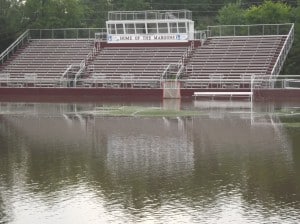
Don’t go holier than thou about residents’ trees. What about artificial turf, especially in a flood plane; artificial turf means DEATH to all life. Talk about destruction of our already destroyed ecosystem, NATURE. Plant trees in Maple Field like there used to be. No more artificial turf.
What about the still open possibility of clear cutting trees in Schedler. Even dead trees provide food for birds, where insects inhabit. No dead trees shall be removed in public fields. There are not enough of them.
Kids will have to learn to live with nature be a part of nature not apart from nature and wait for grass to grow before playing their games.
Some residents cut down trees because they are afraid branches or the whole tree could fall on them and kill them in a storm. We have worse storms now because of man made climate change. And now people on the council want residents to risk having their families killed from trees that can fall on them and fall through their house.
Residents should go to court and fight over the idea of having to pay a fine to cut down a tree on their property.



